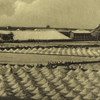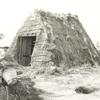Since the beginning Margherita di Savoia history is linked to the Saline, the largest in Europe, founded even before the Christian era. During the Roman period, the place was called Salinae Cannarum, from the nearby Canne town.
After the crash of the Roman Empire, the whole zone fell into decline, that’s why the place is named again on historical documents only in 1105 with the name of Saint Mary of the Salinis; after several happening, it had a prosperous time under the reign of the Suevian kings (XII – XIII century).
TBetween the end of the XIII century and the beginning of XIV a serious malaria epidemic forced the inhabitants to escape to Barletta and just after some centuries the authorities decided to clear the zone. The inhabitants returned on their original territory (the current Margherita di Savoia, already called Saline) at the end of XVIII century after the reclamation of the Salpi Lake and the decision taken by Carl III the Bourbonnais to buy in 1753 the Barletta Saline, entrusting the reclamation to Vincenzo Pecorari, director of the Saline. Pecorari in a positivistic frame of mind, employed highly qualified technicians, such as the architect Luigi Vanvitelli. Pecorari organized such an organic work to make the production increasing. Unfortunately, the conditions of the inhabitants that lived unsafely on the sandy land set between the sea and the salt basin, the so-called Salinari, were very unhealthy, in fact they lived in straw huts often swept away and destroyed from the sea storms.
 The conditions definitely improved in the first half of XIX century, when the Salpi lake and the swampy areas around it were reclaimed and the great State Saline were created. Following huge defense and waters regimentation plans carried on by Vanvitelli and his successors, around the ancient track road along which the straw piles were arranged, gradually this characteristic isthmus- town developed. In 1879 it was renamed Margherita di Savoia in honour to the first Italian queen. The conditions definitely improved in the first half of XIX century, when the Salpi lake and the swampy areas around it were reclaimed and the great State Saline were created. Following huge defense and waters regimentation plans carried on by Vanvitelli and his successors, around the ancient track road along which the straw piles were arranged, gradually this characteristic isthmus- town developed. In 1879 it was renamed Margherita di Savoia in honour to the first Italian queen.
Nowadays Margherita still keeps some characteristics of the ancient Isthmus: the image that a visitor can see is in fact that of an activity “tape”, that develops parallel to the huge beaches: the bathing establishments on the front line, then a long equipped promenade, extremely lively in the summer, then the stores and markets line, then the line of town facilities.
In the middle the old town hall, now restructured, and the modern and well equipped Bath building, a building for the cure based on bromoiodine waters, whose activity has been recently upgraded and relaunched. It is thanks to the Baths, the beaches and the Saline that Margherita di Savoia has become an important and crowded tourist-thermal centre
|
|